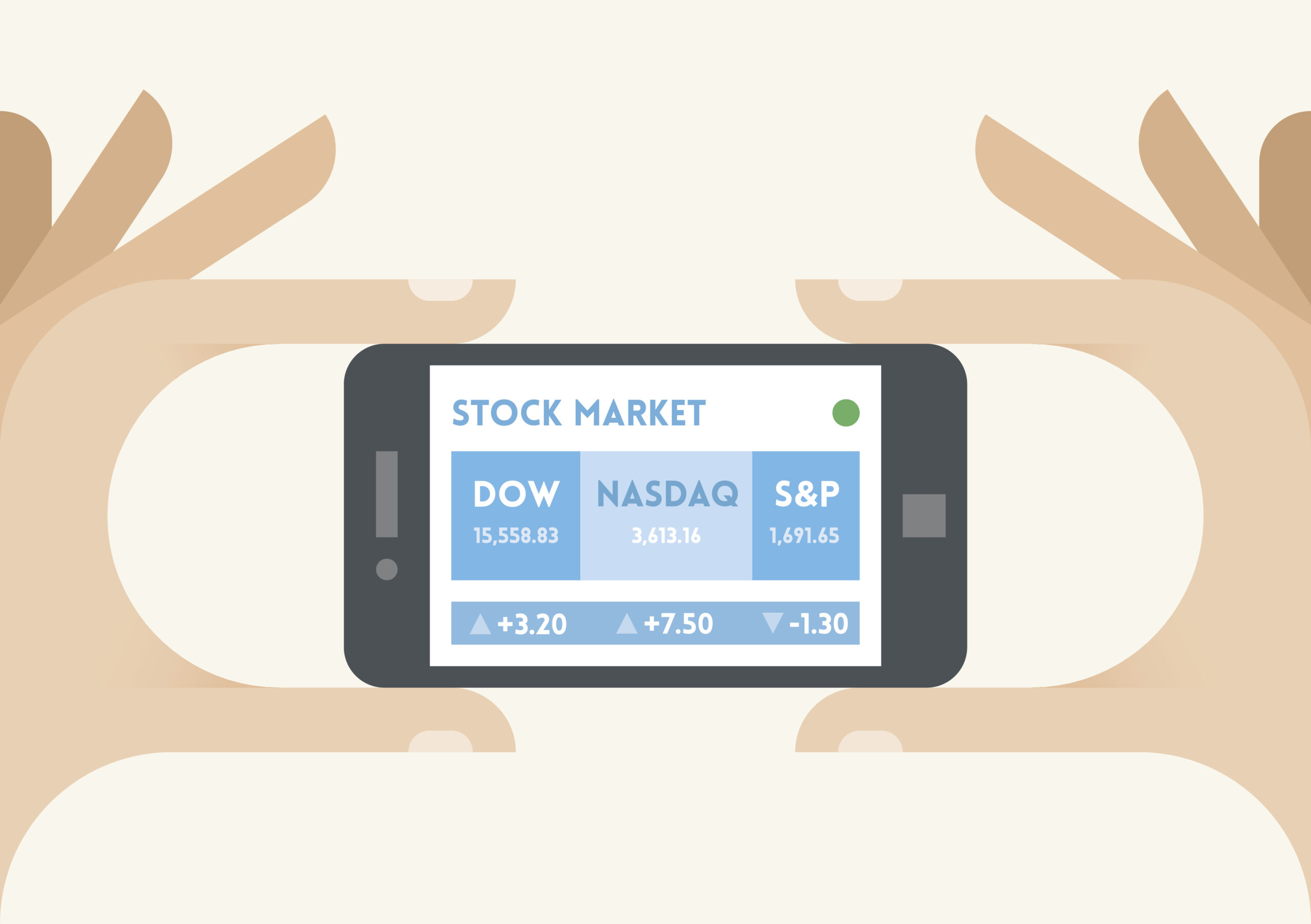The Nasdaq Composite Index, or the Nasdaq, is a market gauge that investors and analysts use to understand overall market trends. Along with the Dow Jones Industrial Average (DJIA) and the S&P 500, the Nasdaq is one of the more commonly used indexes in the United States.
Learn how the Nasdaq works, how it compares to other top market indexes, and how you can invest to try to achieve similar returns.
Nasdaq Composite Index Definition
The Nasdaq is a capitalization-weighted index that includes more than 2,500 companies listed on the Nasdaq stock exchange. As a capitalization-weighted index, its components are weighted in proportion to their market cap, or the value of the company’s outstanding shares, and not their share price.
The Nasdaq is weighted toward the information technology sector, although it includes companies in many sectors.1
Nasdaq vs. The Dow vs S&P 500
Unlike the Nasdaq, the Dow and the S&P 500 — both owned by the S&P Dow Jones Indices — focus less on the information technology sector and more on large-cap U.S. companies across many sectors.
The Dow Jones is comprised of 30 blue-chip stocks of some of the largest U.S. companies in various industries (with the exception of transportation and utilities) that trade on the New York Stock Exchange (NYSE) and the Nasdaq. The Dow is a price-weighted index, so stocks with higher prices have a greater fraction of the index than stocks with lower prices.
The S&P 500 is a capitalization-weighted index like the Nasdaq. It includes 500 companies in all major U.S. sectors, or about 80% of the total market cap of U.S. publicly traded companies. The S&P 500 usually includes the companies in the Dow, and the companies in the Dow typically comprise about 25% to 30% of the S&P 500’s value.2,3
Nasdaq vs. NYSE
The Nasdaq may also refer to the Nasdaq Stock Exchange, which is like the New York Stock Exchange (NYSE) in that they are both platforms where you can buy and sell shares throughout the trading day.
One key difference between the two exchanges is that the NYSE still has a physical trading floor in New York, where designated market makers (DMMs) maintain the markets for specific securities, and where floor brokers can execute trades for clients. The Nasdaq, on the other hand, does not have a physical trading floor and only operates electronically.4
Companies that list on the Nasdaq are often in the information and technology sector, or are smaller growth companies, although several established companies are listed on the Nasdaq as well. The NYSE exchange tends to draw more established blue-chip companies.
How to Invest to Track the Nasdaq
You cannot invest directly in the Nasdaq Composite Index, but you can invest in a way to help replicate its returns. One way to try to mirror the returns of the Nasdaq is to invest in a mutual fund or an exchange-traded fund (ETF) that tracks it.
A mutual fund is a company that pools investments to purchase a basket of securities. You can invest in a mutual fund to achieve diversity instead of buying the stocks separately. An exchange-traded fund is similar to a mutual fund, except shares trade over an exchange like stocks. Mutual funds and ETFs can invest in securities in a way that aims to replicate a particular index like the Nasdaq. The fund may purchase all the securities in the index or a sample of those securities.5
Another way you can try to invest toward achieving the same returns as the Nasdaq is to purchase stocks of each of the companies. However, this approach could be significantly time-consuming and would likely entail substantial fees and expenses.
Before you invest in a mutual fund or an ETF, you should factor in any expenses or fees that can reduce returns. Make sure you fully understand the risks, including the risk that the fund may underperform the index. For any fund you are considering buying, read the prospectus carefully.
The Bottom Line
The Nasdaq Composite Index can be a valuable tool to gauge broader market movements, particularly in the information technology sector. You can use the Nasdaq in tandem with other market indexes like the S&P 500 or the Dow to help you understand market trends. However, no matter what the Nasdaq indicates, there are no guarantees for how the market will perform.
Get Help from a Professional Financial Advisor
A financial advisor can help you determine which investment strategies best fit your current needs and future goals. We can help match you with a financial advisor who will put your needs first.
Investors cannot invest directly in indexes. The performance of any index is not indicative of the performance of any investment and does not take into account the effects of inflation and the fees and expenses associated with investing.
1 Nasdaq, “NASDAQ Composite Comp.” https://indexes.nasdaqomx.com/Index/Overview/COMP
2 S&P Dow Jones Indices, “Icons: The S&P 500 and The Dow.” https://www.spglobal.com/spdji/en/research-insights/index-literacy/the-sp-500-and-the-dow/
3 S&P Dow Jones Indices, “S&P 500.” https://www.spglobal.com/spdji/en/indices/equity/sp-500/#overview
4 NYSE, “Trading Information.” https://www.nyse.com/markets/nyse/trading-info
5 Investor.gov, “Index Funds.” https://www.investor.gov/introduction-investing/investing-basics/investment-products/mutual-funds-and-exchange-traded-4


